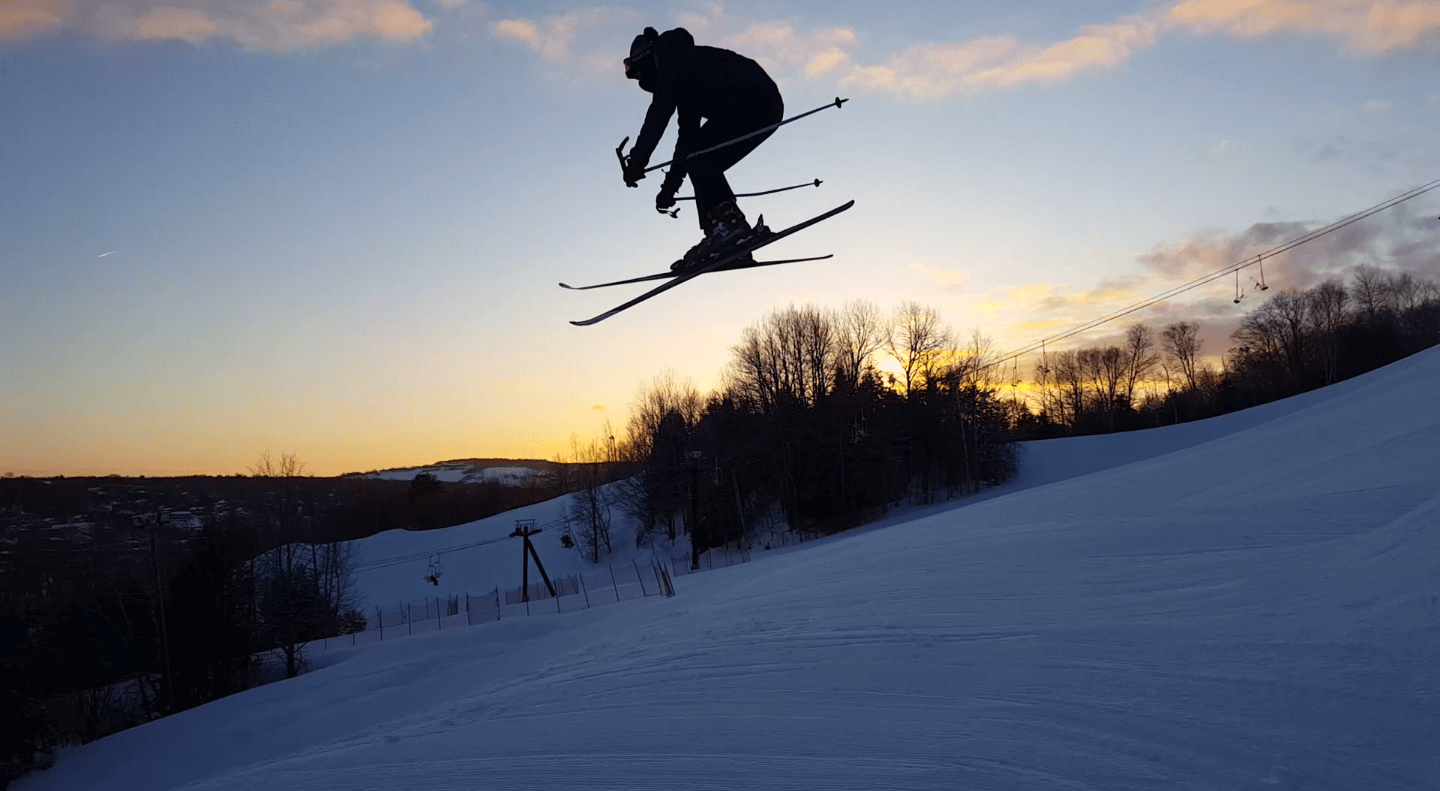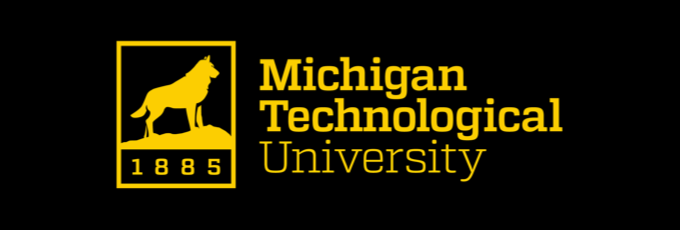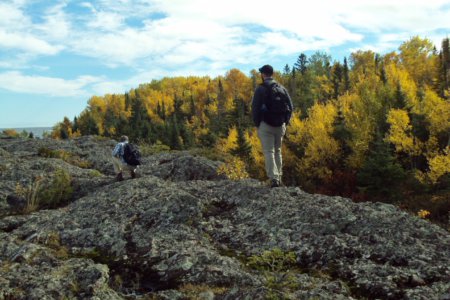“We set out as the Michigan Mining School in 1885 to train mining engineers on the Keweenaw Peninsula to better operate copper mines,” says Audra Morse, chair of the Department of Civil and Environmental Engineering. “Today, our students and curriculum embrace the spirit of hard work and fortitude our founders once had.”
Traditions run deep at Michigan Technological University as does preparing students for future challenges.
Every January, students are busy upholding one of Michigan Tech’s fondest traditions: Winter Carnival. The Upper Peninsula of Michigan, referred to around here as the UP and home of Michigan Tech, receives a seasonal thick blanket of snow. It’s a lake-effect from nearby Lake Superior and serves as the inspiration for the annual Winter Carnival. What started in 1922 has grown into one of the biggest annual winter celebrations in the nation. “Not even COVID can cancel this event,” says Morse. “The students at Michigan Tech work around challenges so that our tremendous ‘ode to snow’ can go on.”
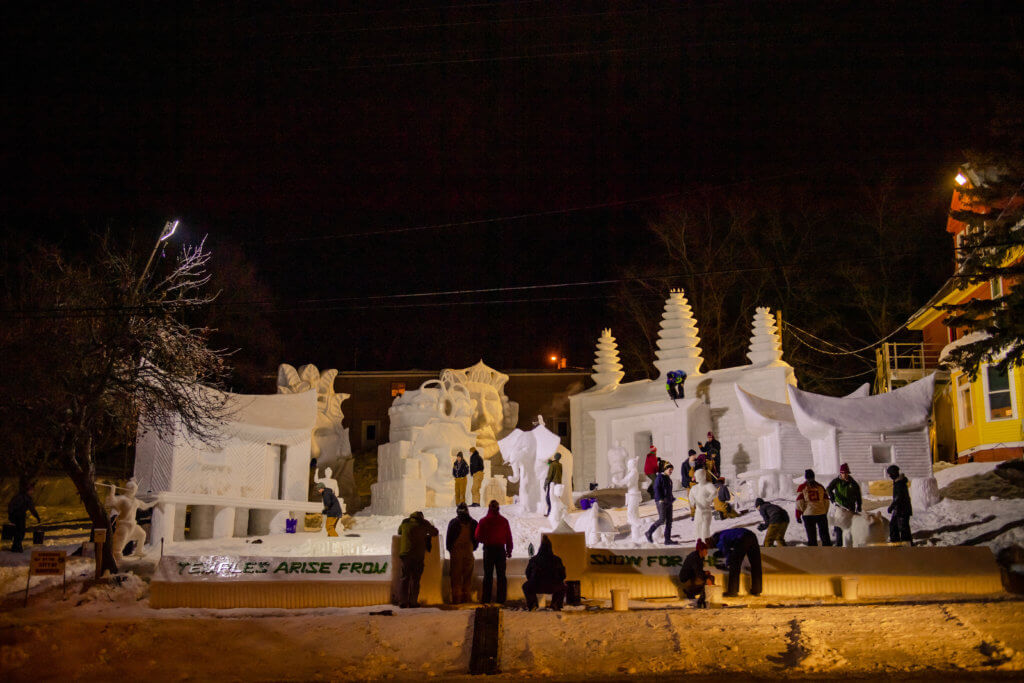
Source: Michigan Tech, Department of Civil & Environmental Engineering
The special highlight of Winter Carnival: larger-than-life snow statues —spectacular, elaborate displays of snow and ice. This year, the Winter Carnival theme is “Our Favorite Cartoons for Snow Afternoons.” Student organizations all across campus will hear the call to design and construct a snowy sculpture, with the winner receiving bragging rights for a year.
Ice sculptures and a Michigan Tech education have a lot more in common than meets the eye. Constructing snow sculptures is both a civil engineering and artistic feat. Snow is thought of as a building material, just as civil engineers think of concrete, wood, asphalt and steel as building materials. “Constructing the sculptures requires developing retaining walls to hold the show in place until the shape and size of the sculpture is maintained,” Morse explains. “While some artists shape clay, engineers at Michigan Tech shape snow — into buildings, Earth, superheroes, airplanes and so much more — depending on that year’s Winter Carnival theme.”
Only at Michigan Tech can the love of snow be demonstrated through civil engineering and construction management disciplines — creating unique learning experiences that prepare students for the vagaries of their future workplaces. To take the love of Winter Carnival a step even further, Michigan Tech geospatial engineering students in the Douglass Houghton Student Chapter (DHSC) of the National Society of Professional Surveyors use LIDAR to scan Winter Carnival snow statues, with help from Michigan Tech’s Great Lakes Research Center.
LIDAR measures distances of a target using a laser and measures the reflection with a sensor. The time required for the laser to return, together wavelength data are used to make a 3-D representation of the target.
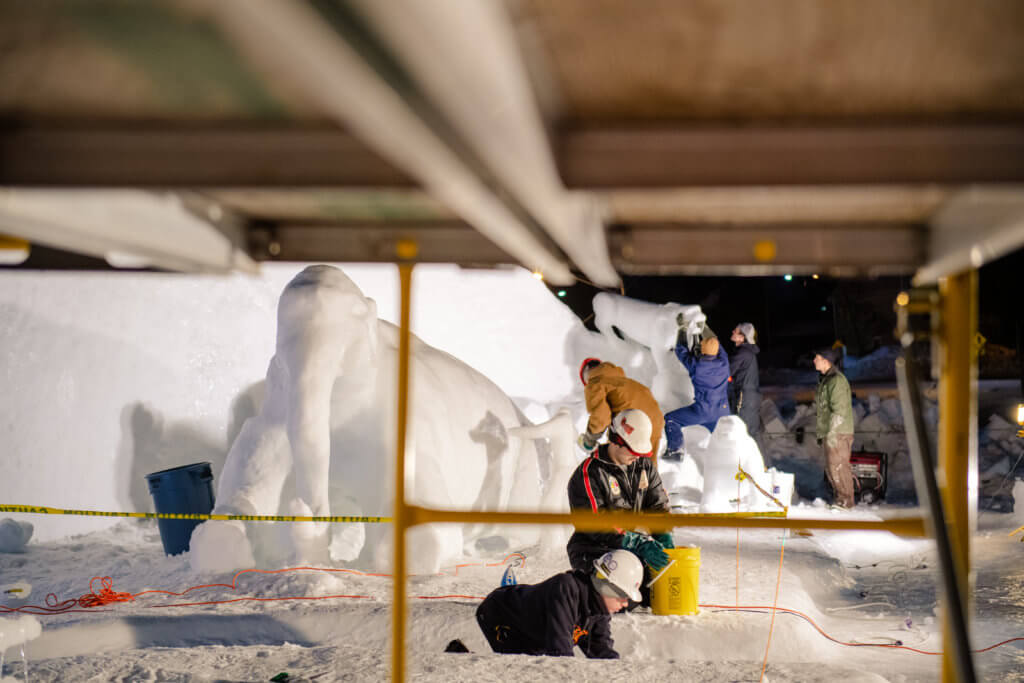
Source: Michigan Tech, Department of Civil & Environmental Engineering
“Geospatial students work with Michigan Tech snow statue builders, using LIDAR to scan and observe a point cloud of their snow statue, recording it far better than a simple photograph could,” says Joe Foster, a professor of practice in the Department of Civil and Environmental Engineering. “LIDAR data collected from this endeavor, literally millions of points, enables us to 3D-print an entire snow creation as a trophy, given to each of the prize-winning snow sculpture teams.”
Foster issues an invitation to all: “If you happen to find yourself in the Copper Country during Winter Carnival, come check out all the Michigan Tech geospatial engineering students hard at work using our FARO LIDAR scanner. It’s their goal to capture these amazing snow sculptures to enjoy long after the snow melts.”
At Michigan Tech we have a tradition of working hard and playing hard,” adds Morse. “It’s our nature to keep pace with the changing needs of technology.” Dr. Melanie Kueber Watkins, an instructor for a civil and environmental engineering course on river and floodplain hydraulics, uses remote sensing and LIDAR to digitally collect river bathymetry and satellite data. Bathymetry is the measurement of depth of water in oceans, seas, or lakes. “These new methods have changed how I think about civil and environmental engineering because of the unlimited data and possibilities they provide,” she says. Kueber Watkins gives her students a cutting-edge experience with big data, just as the industry is emerging. “The endless collection of ground elevation data we can collect via LIDAR using a drone or remote sensing, and bathymetry we can accomplish with an autonomous underwater vehicle, give us much more data than we ever hoped for in engineering.”
At Michigan Tech, students in her capstone senior design class use surface models with LIDAR to design roads and bridges. In other senior design projects focused on river and floodplain hydraulics, students model rivers for new bridges and floodway inundation mapping. Kueber Watkins is excited about a new elective course she teaches, “Water Resources Modelling and Design,” where she and the students use LIDAR. This class evolved from one of her research projects funded by the National Academies of Science, “Highway Hydraulic Engineering State of Practice.” For that project, Kueber Watkins partnered with a hydraulic engineer at the Federal Highway Association. “They helped by demonstrating hydraulic modelling using LIDAR, enabling me to bring modelling and big data use into the classroom,” she says. “So far, the response has been excellent, and students have been enthusiastic about using LIDAR for models and design.”
Last fall, Julia Manzano was a student in the River and Floodplain Hydraulics course. “Dr. Watkins introduced students in the class to the kind of modeling software commonly used in industry,” she says. “The models we created in class were relatively complex and utilized various tools and programs.” As Manzano began interviewing for a job just prior to graduation from Michigan Tech, she found employers were very happy to hear she’d already learned new software programs and methods, some even more technical than those they were currently using. “As an entry-level engineer, it’s very valuable to be able to bring new skills to the engineering team you’ll be working with,” she says.
Manzano had a summer internship with a consulting firm in their Hydraulics & Hydrology group, where she applied the modelling skills and theories she learned at Michigan Tech, making a sizable contribution to the hydraulic modelling project. “I knew I wanted a full-time job in water resources engineering after graduation,” says Manzano. “Having this internship on my resume, along with all of the experience from it, made me a much stronger candidate. I was able to get the job I wanted.”
Manzano, now a recent graduate of the Environmental Engineering program, is pursuing a Master of Science in Civil Engineering at Michigan Tech to continue to advance her hydrology and hydraulics knowledge. “Traditions and new advances in technology help Michigan Tech’s civil, environmental, and geospatial engineering graduates prepare for work in the 4th Industrial Revolution,” says Morse. “But it’s more than knowing how to model and use the latest software. The key is understanding the problem you are solving and how it affects those around you.”
Distinguished Professor Dave Watkins teaches an international design class for students who have a strong desire to apply their engineering skills to benefit society. Students travel to different parts of the world, to work with underserved communities on their basic infrastructure, often a highly pressing need. “It’s very rewarding for students to gain an appreciation of other cultures and awareness of different standards of living, he says. “They are highly motivated to complete their project as a service to the community. And although there are often parts of any trip that do not go as planned, it’s always an adventure!”
In addition to applying technical design skills, students in international senior design develop teamwork, communication, and project management skills. “Open-ended design projects require students to ‘plan the work and work the plan’—and that gives them a sense of industry expectations,” says Watkins.
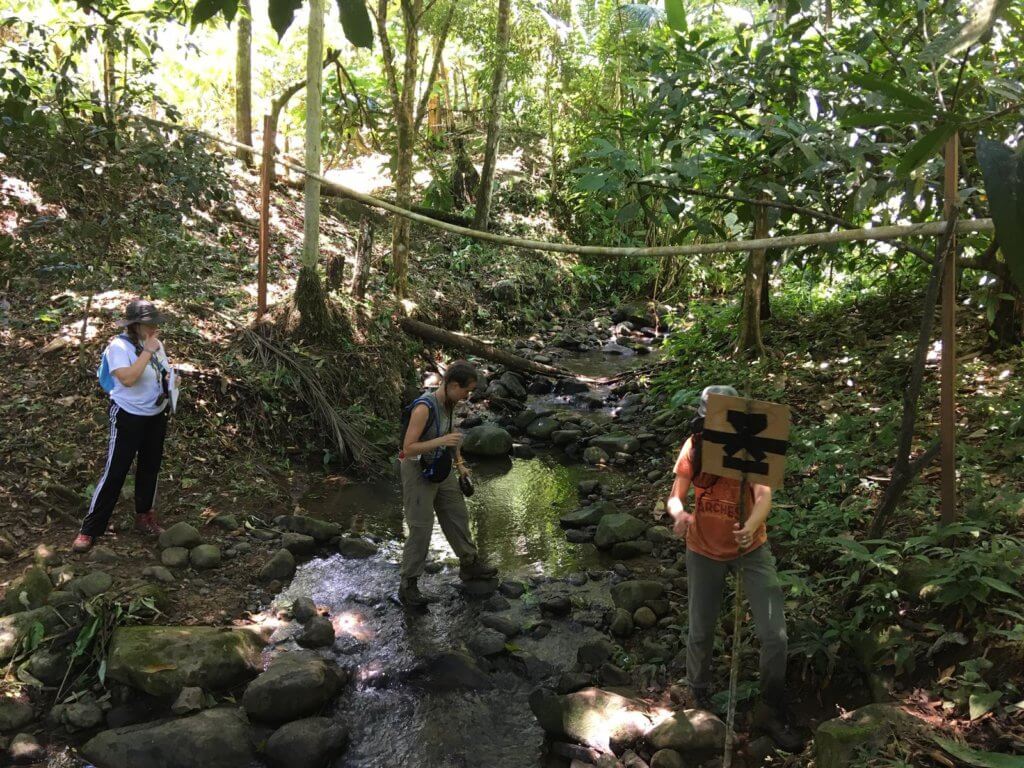
Source: Michigan Tech, Department of Civil & Environmental Engineering
Many projects also require taking government and regulatory perspectives into account, and for international community projects, students often engage with non-profit organizations as well. “Of course, community-based projects also require ethical considerations, such as finding a balance between the merits of a design, and a community’s technical and financial capacity—vital in order to ensure project benefits will be sustained over time,” he notes. “Last but not least, we emphasize the importance of lifelong learning, because students must learn new skills and apply new tools to address a problem they haven’t seen before, both during the projects and throughout their future careers.”
Traditions and civil and environmental engineering projects at Michigan Tech are deeply influenced by the area surrounding where we live in. Professor Stan Vitton, a geotechnical engineer and faculty member in the CEE department proudly shares the accomplishments of his most notable senior design class. In that class, students focused on the Redridge Dam, located in Stanton Township, Michigan. “The township board was considering removing both the Redridge timber crib dam, constructed in 1894, and the steel dam, constructed in 1900. The main issue was the timber crib dam. It had been deemed unstable by a previous professional engineering inspection. But during the students’ first field trip to the site, they found that the original engineering inspection missed an important underwater element of the dam.”
The Michigan Tech students determined that a large, stable rock fill in front of the timber crib dam served as the main support element of the dam. Later, stability analysis conducted by the students showed the dam actually had a very large factor of safety. The students presented their findings to the township board. Based on the students’ work the board decided to keep the dam — and gave each student a certificate of appreciation.
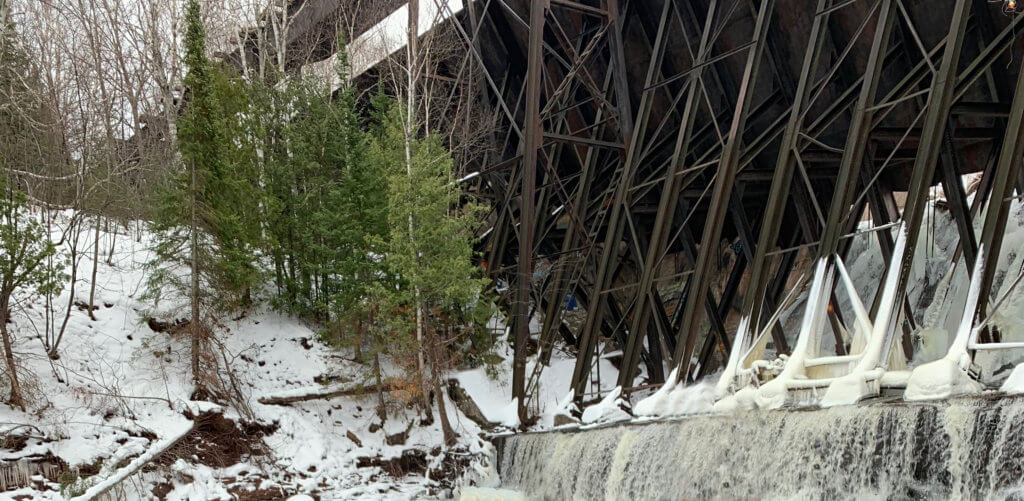
Source: Michigan Tech, Department of Civil & Environmental Engineering
“In hindsight, there were two very positive results of this particular senior design project,” Vitton shares. “First, a study by the US Fish & Wildlife Service found that the Redridge Dam was a barrier to an invasive species, sea lamprey, making the Salmon Trout River the only river system on the Great Lakes without sea lamprey. Second, the Redridge Steel dam provided significant flood retention capacity during a major flood that occurred on June 18, 2018 Father’s Day. The dam prevented the loss of Freda Road just downstream of the steel dam. In 2019, a Michigan Tech senior design team determined that the dam held back about three quarters of a billion gallons of water that would have overtopped the Freda Road if the dam had been removed,” adds Vitton.
“Our traditions prepare us for the future — for opportunities such as Industry 4.0 and also the inevitable social, environmental, and economic constraints,” concludes Morse. “Traditions are customs passed on from one generation to the next, and in the Department of Civil and Environmental Engineering at Michigan Tech, traditions ground the education we provide.”
Apply now to launch your undergraduate degree or graduate degree so that you can be part of Michigan Tech’s traditions.

